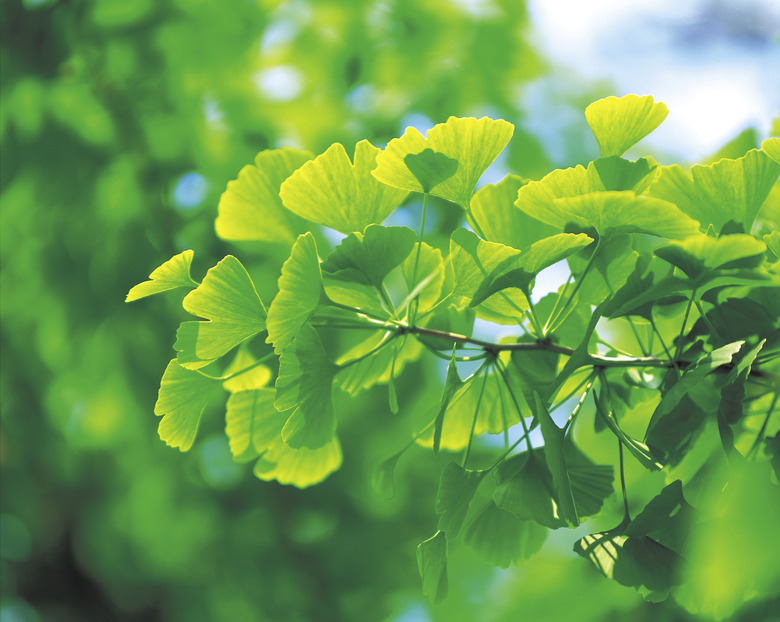Why Do Ginkgo Tree Berries Stink?
Ginkgo (Ginkgo biloba) is an aesthetically pleasing, ornamental tree that thrives in U.S. Department of Agriculture plant hardiness zones 3 through 8. Growing between 25 and 50 feet tall with a width of 25 to 35 feet, the gingko tree is often used as a specimen tree in both urban and suburban landscaping. However, the choice between a male or female ginkgo can make a large difference in your satisfaction with your tree, as some ginkgo trees produce messy, rancid-smelling berries in the fall.
Male vs. Female Ginkgo Trees
Step 1
Ginkgo trees possess both male and female sexual organs, making them dioecious. Nevertheless, these trees are identified as distinctly male or distinctly female for the seeds that they produce during the growing season. The male ginkgo tree produces bare seeds that cause little concern for homeowners regarding smell or mess. The female ginkgo tree, on the other hand, produces seeds that, when fertilized, develop into bunches that are covered with a soft, fleshy coating. These fruits resemble bunches of small green cherries, and are responsible for making a mess in yards and on driveways, sidewalks and patios.
- Ginkgo (Ginkgo biloba) is an aesthetically pleasing, ornamental tree that thrives in U.S. Department of Agriculture plant hardiness zones 3 through 8.
- The female ginkgo tree, on the other hand, produces seeds that, when fertilized, develop into bunches that are covered with a soft, fleshy coating.
Stinky Berries
Step 1
In addition to creating a mess in your yard as the green berries turn brown and fall from the tree, the berries of the female ginkgo tree also have a rancid odor. This odor is often likened to the smell of vomit, or rotting butter or milk. It is highly unpleasant, making the female ginkgo tree a poor choice for your home, as this berry drop occurs each fall. The smell of the rotting berries is so distasteful that it is often described as "offensive," "evil" and "abominable."
Cause of the Odor
Step 1
As the berries fall to the ground, the fruity, fleshy, outer layer of the ginkgo seed begins to rot. As it rots, this layer produces a chemical compound known as butyric acid. It is the butyric acid in the ginkgo berry that gives it a foul-smelling odor. Little can be done to remedy this smell once the berry drop occurs. Short of removing the tree, homes and cities where female ginkgo trees are planted as a specimen have to deal with the stench until the berry drop has run its course.
- In addition to creating a mess in your yard as the green berries turn brown and fall from the tree, the berries of the female ginkgo tree also have a rancid odor.
Considerations
Step 1
The most effective way to avoid the stinky berry-drop associated with the ginkgo tree is to make sure that you plant a male, and not a female, tree. The male tree possesses the same ornamental qualities and unique leaf shape that give the female tree its charm, minus the unpleasant smelling fruit. It should also be noted that the tree is male upon purchase to ensure that you don't experience problems later down the road. Ginkgo trees can live upwards of 1,000 years. They are extremely hardy trees. However, they do not begin to produce seeds until they reach maturity, which typically occurs somewhere between 20 and 40 years.
